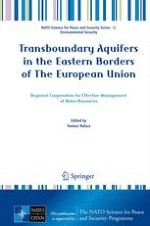2012 | OriginalPaper | Buchkapitel
6. Integrated Water Resources Management: Approach to Improve River Water Quality in the Western Bug River Basin
verfasst von : Jens Tränckner, Bjoern Helm, Frank Blumensaat, Tatyana Terekhanova
Erschienen in: Transboundary Aquifers in the Eastern Borders of The European Union
Verlag: Springer Netherlands
Aktivieren Sie unsere intelligente Suche, um passende Fachinhalte oder Patente zu finden.
Wählen Sie Textabschnitte aus um mit Künstlicher Intelligenz passenden Patente zu finden. powered by
Markieren Sie Textabschnitte, um KI-gestützt weitere passende Inhalte zu finden. powered by
